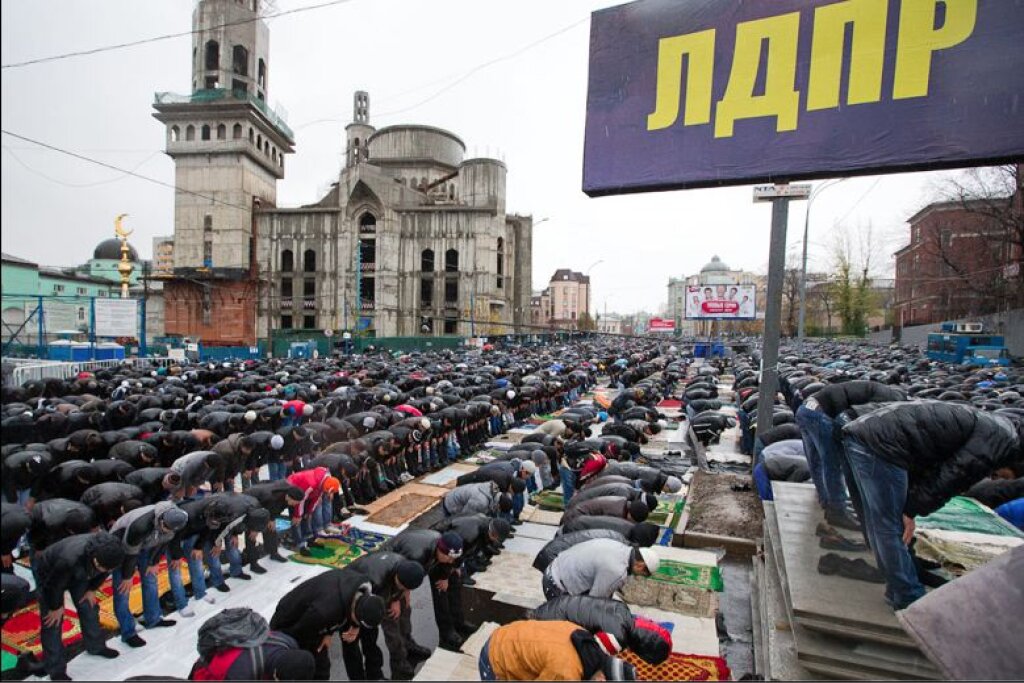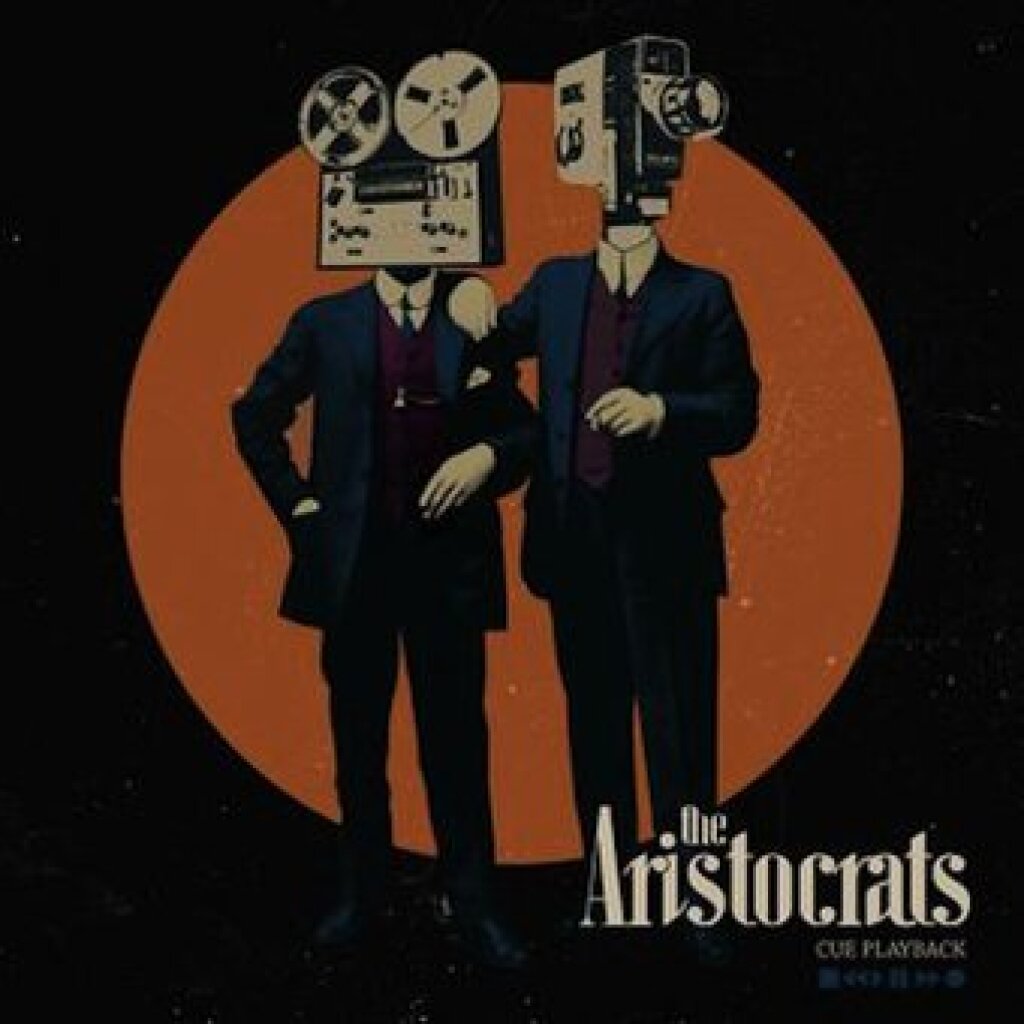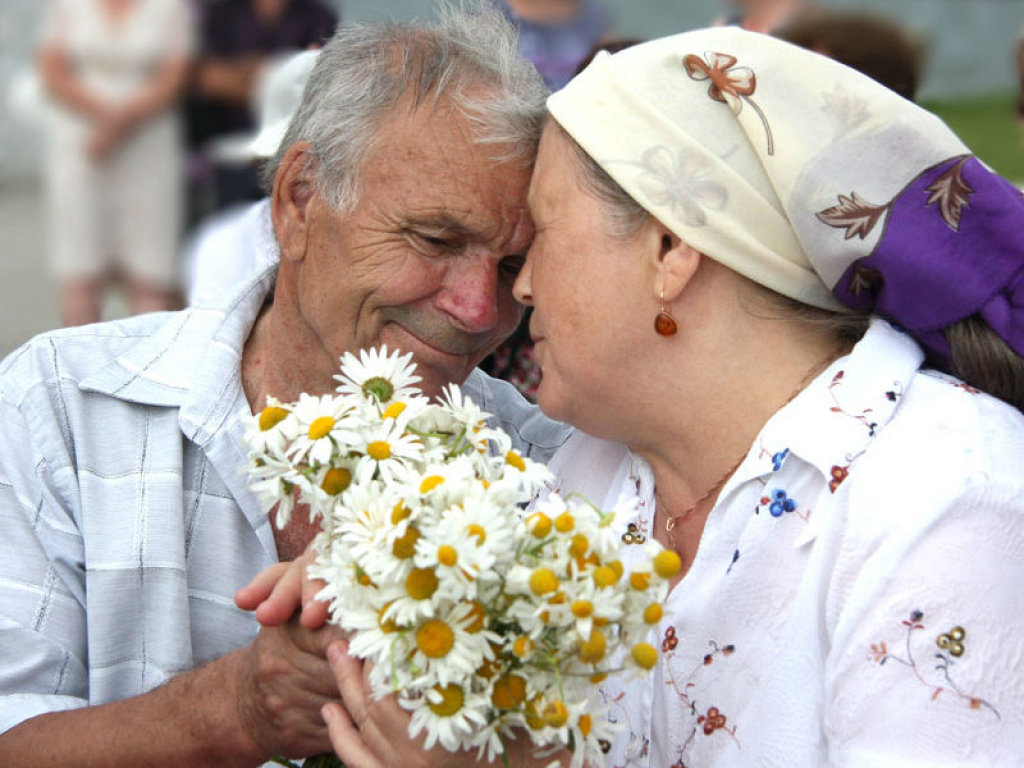A guest post by Mariya Boston, Visiting Assistant Professor at Lawrence University.
Rustem Adagamov, a rather well-known photographer and public figure known on LiveJournal as "Drugoi," posted a series of photos entitled "Курбан-байрам по-московски" – “Kurban-Bayram Moscow-style”, which was celebrated on Friday, October 26th. The photos and the captions to them are rather objective, but there is one line in his post that tells it all: "Это теперь тоже наша Москва и к ней нужно привыкнуть" - "Now this is our Moscow, too, and it's time to get used to it".
Muscovites are struggling to accept this presence of the "other." Horrified Muscovites write in their blogs and tweets that city's metro "is getting darker", while newspapers publish stories of fights breaking out in the metro between the “representatives of North Caucasus,” as they are often called, and the white Moscow inhabitants.
Of course, Moscow has always welcomed people of different colors, and traditions--well, at least it claimed so. But an increasing flood of immigrants from Dagestan, Tajikistan, Azerbaijan, Chechnya and other smaller nations causes a certain anxiety. My very good Armenian friend in the days of our MSU student life (in the early 2000s) was arrested and detained at least once a semester: racial profiling, doesn't he, a philologist, look like a typical terrorist with his thick eyebrows and brown eyes? Now even he, who works at the Russian Language Institute, shares the very same anxiety: on the day of celebration of Kurban Bayram, he recommended that his wife (a proper blond, blue-eyed Slavic type) stay at home in fear of any public unrest. And for many, this fear is not unreasonable.
Occasional shootings in downtown Moscow do not exactly help fight the stereotype of the violent bestial man from Caucuses. One of the most scandalous and recent ones (back in September) happened on Tverskaya street, not far from Kremlin and Moscow mayor's office, when one of the guests in a Dagestani wedding procession started shooting with a BB gun out of the car into the street. The police, after several attempts, finally managed to stop the procession and gave the shooter a 2000-ruble fine (roughly equivalent to $70). According to one account, a shard of broken glass that flew off one of the shot cars injured a child. When the general public learned about the incident and the fine, Muscovites were outraged and even the mayor called on the police to act more severely: eventually, the shooter got 15 days in jail. The Dagestani representative in Moscow condemned the shooting, but this did not receive nearly as much coverage in the news as the shooting itself.
The problem itself is, of course, not a new one; every European capital has had to adjust to immigration. But the problem is relatively new for Moscow and is largely rooted in the fear of terrorism that goes back to the beginning of Putin’s presidency. The tension, however, has been building for some time. And while state TV channels periodically extol the heroic work of Moscow police who uncover yet another sweatshop or illegal immigrant dormitory, the general public is not buying it. One can only hope that Muscovites will come to terms with their increasingly non-Slavic neighbors sooner than later. And it is definitely worth watching how this relationship develops.
A couple days after the Tversakaya shooting a joke appeared on the Internet: : “Mom, Can I go shoot at people on the street? –Ok, just as long as you don’t go dancing in a church."




